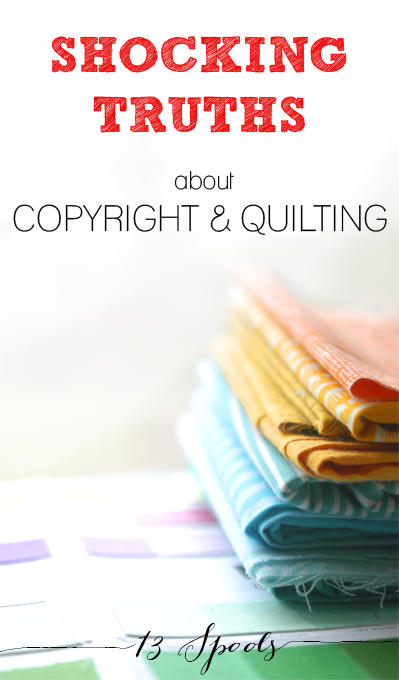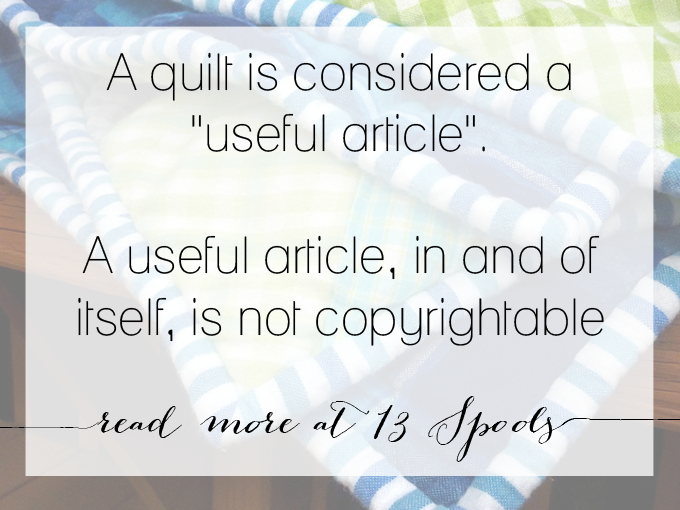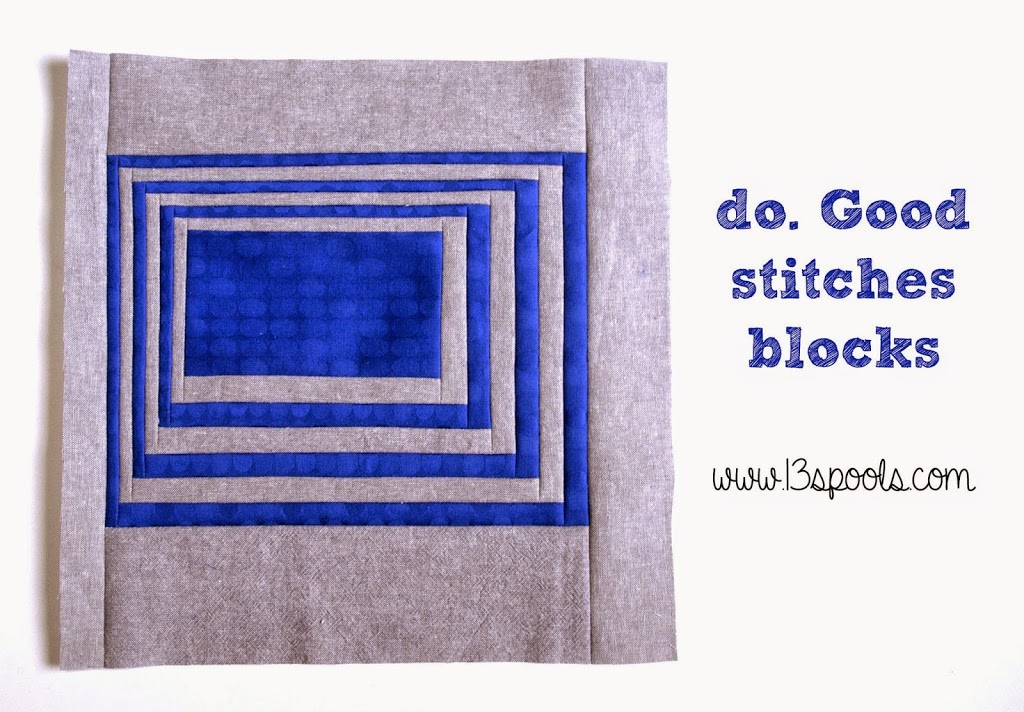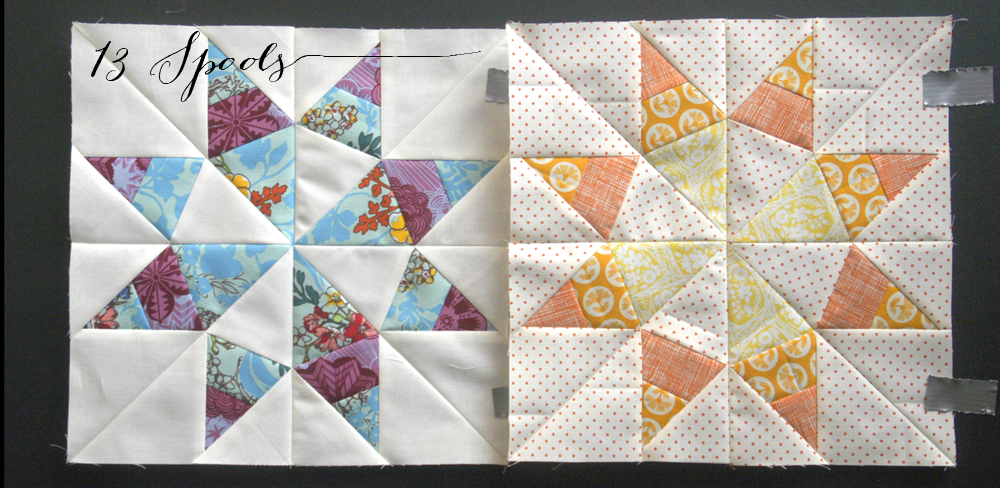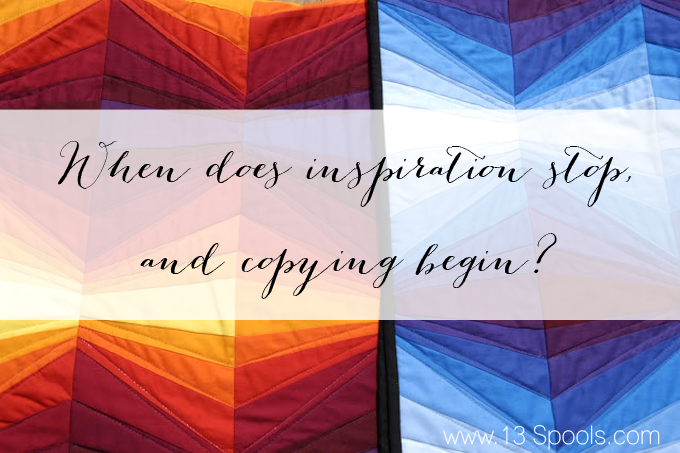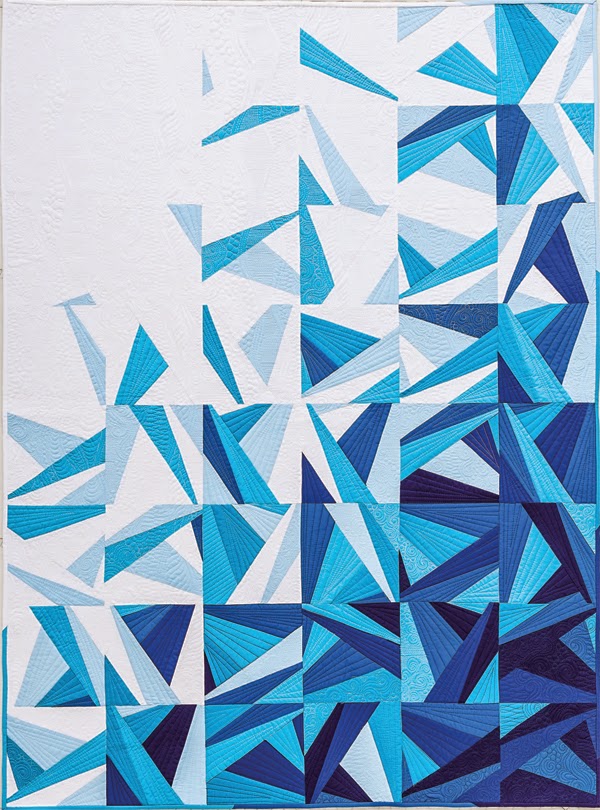Can I copyright my quilt?
Note to all who are here from the MQG article:
As I stated at the bottom of the article, this is not legal advice and does not replace legal advice. I firmly believe the MQG ought to have consulted with a practicing copyright attorney as the basis for their article, rather than citing a small handful of blog posts. This post was written as a general primer of my understanding of copyright law (and was going to be part of a greater series to give greater depth), and is NOT meant to replace the advice of a practicing copyright attorney.
A number of individuals on social media are misrepresenting my article, and the claims I make, so I do want to clear a few things up quickly (and I get it! It's ok! We're all mad AND READING REALLY QUCIKLY AND ANGRILY!!):
First, there is a difference between my personal, create beliefs and my understanding of copyright law. This article is about copyright law, not about my personal thoughts on people being "inspired by" other quilters & what I think is ethically acceptable, or what was as quilters ought to be able to copy from other quilters. It's just a look at copyright law & design. Second, I do NOT believe it is always black and white as to what can be copyrighted. While I state throughout the article things like "possibly copyrightable" and "this is a gray area", many readers have missed those points, as they are already angered by the MQG article - I completely understand (I'm mad too!!!), so I want to encourage you to take especial notice of those points. Were I to write an article now, that would be covered with greater emphasis - but I wrote this quite some time ago, before the entire kerfluffle, so I didn't foresee this issue. So I'll restate it as clearly as possible here: Some things are definitely copyrightable. Some things are definitely not. And a lot of things fall in between those two. Third, I did not condone the use of my article as a basis for the MQG's new policy, but I also don't know how much they actually relied on it. I wasn't involved. I have no idea. A blog post can NEVER replace legal advice, even if that blog post was written by a lawyer. Even if I had a J.D. in copyright law and another doctorate up my sleeve, a brief blog post could never replace professionally given legal advice to a large non-profit for a specific situation, like a quilt show. Never. I've been chatting with them about this topic recently, and will definitely keep you updated about any changes that I know of!
Lastly, I want to encourage you to read the book The Copyright Zone, and (more importantly) copyright law itself, to gain further clarification upon this matter. I believe that the MQG strongly overstated what copyright law may cover - unfortunately, this means that many readers are denying copyrights that are afforded under the law in their push-back efforts. All around, this is a really sad & frustrating situation.
I hope and pray that the MQG can retract their statement, reconsider it more closely under the guidance of the greater guild & appropriate legal counsel, and restate a revised policy.
Until then, peace folks. Have a drink if copyright law is making you grumpy today.
x Amy
***
Before moving onto the topic of selling quilts made from copyrighted patterns, I believe we need to delve deeper into the idea of "What does copyright cover?" I recently clarified that copyright does not protect ideas. Now, the question is, "Can I copyright my quilt?"
Well...that depends.
Here's the thing. Under U.S. copyright law, a quilt is considered a "useful article". A useful article, in and of itself, is not copyrightable (1).
But the designs within the piecing and quilting may be protected by copright: "Copyright may, however, protect any pictorial, graphic, or sculptural authorship that can be identified separately from the utilitarian aspects of an object. Thus a useful article can have both copyrightable and uncopyrightable features. For example, a carving on the back of a chair or a floral relief design on silver flatware can be protected by copyright, but the design of the chair or the flatware itself cannot, even though it may be aesthetically pleasing" (1). So no one can copyright the concept of a quilt - the combination of three layers of fabric, batting, and then fabric once again, with stitching through all of the layers and some sort of binding/finished edge to create a coverlet. You can't copyright your specific kind of binding, or a method of quilting, or the size or shape of a quilt. You can potentially copyright your pieced designs and your own free-motion quilting patterns.
I say "potentially" because you do have to have something new - copyright protects "original works of authorship" (2, emphasis added). You made a super awesome Irish chain quilt? Great! Can you copyright it? Nuh-uh. That biz ain't new or original. (No worries. You and your quilt are still super cool.)
***
So, let's get into some other concrete examples:
// PART A: ORIGINAL DESIGNS //
Example 1: Completely original design
Take my "Fire & Ice" quilt:
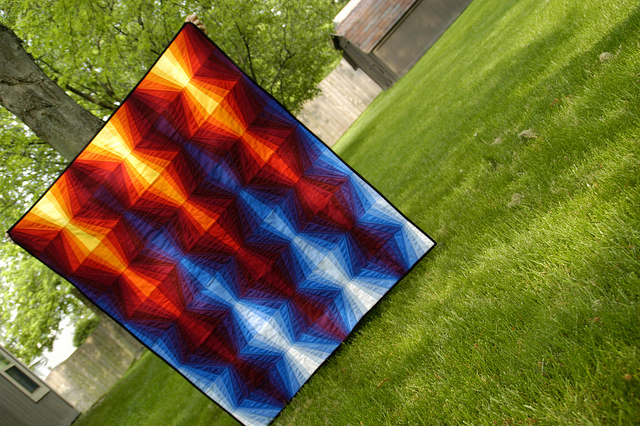 The design displayed on the quilt top is copyrighted; the pattern I wrote is also copyrighted (as in, I actually did pay to register for a copyright from the U.S. copyright office, got the certificate and everything.) But just as a reminder - it's a quilt and therefore it's a useful article, so it's copyright only extends to the design aspects (the design in the quilt top, created by the piecing), not to its functional aspects (3 layers, quilted, bound, etc. as explained earlier).
The design displayed on the quilt top is copyrighted; the pattern I wrote is also copyrighted (as in, I actually did pay to register for a copyright from the U.S. copyright office, got the certificate and everything.) But just as a reminder - it's a quilt and therefore it's a useful article, so it's copyright only extends to the design aspects (the design in the quilt top, created by the piecing), not to its functional aspects (3 layers, quilted, bound, etc. as explained earlier).
Example 2: Completely original design using an unoriginal method
This block is copyright protected*. Now, this is a modern log-cabin block in that it's made with a log cabin construction method. Although methods are not copyrightable, I can still own the copyright for this design. The design in and of itself is original, making it an original work of authorship, and thus potentially copyrightable.
Edited to add: My husband points out that this is a derivative of the Log Cabin design, as well as using it's method. So it may not be copyrightable. Let's also look at this example of one of my "log cabin construction" blocks from my book:

Copyrightable? I think so. I think it possesses enough originality to be considered copyrightable. But this one could go either way, depending on who you ask. Let's look at this concept for greater clarification:
You can't, for example, claim that you own the rights to any and every close-up of two hands shaking. You can own the copyright to your specific and unique image of two hands shaking but you can't claim that all other shots of shaking hands are infringements of your photo merely because they happen to portray two hands shaking...Your copyright applies to your expression or rendition. Your specific unique photograph of a handshake itself can be copyrighted, but not the ide of two people shaking hands. (The Copyright Zone, by Edward Greenberg and Jack Reznicki, chapter one)
I believe that this log cabin is my "expression or rendition", and thus copyright protected. I also believe the previous example is my unique "expression or rendition". Not everyone may agree.
Example 3: Copied design from an original work, now in public domain
The Texas Star block is a vintage quilt block. I didn't design it, but since it's vintage and the copyright has passed, it has entered public domain. It's totally cool if I sew blocks with it, write up patterns for it, and even charge for the pattern (after all, I took the time to create the pattern, take the photographs, write the directions, sketch the illustrations, etc.), but I still don't own a copyright on this specific block design. It's in the public domain. I can't claim to have ownership over the design, just ownership on my photos (and possibly some of the technical sketches). (And if you're interested in making the block, the pattern is available for free here.)
// PART B: INSPIRED DESIGNS //
This is where it gets really dicey - "inspired" designs. As in, "This quilt was 'inspired by'/'based on'/'influenced by' this other quilt/pattern/design." Exactly when does 'inspiration' stop and copying begin?
According to U.S. Copyright Law, only the owner of a copyright can create copies and derivative works based upon his/her copyrighted works (he/she also has the right to give someone else permission to create derivative works) (4). So creating a copy or derivative of another designer's original, copyright protected quilt is copyright infringement.
It doesn't matter if you are skilled enough to reproduce their quilt without purchasing their pattern - copyright is dependent upon originality, not complexity.
So here's the question - what is a derivative?
Once again, according to U.S. Copyright Law, "A 'derivative work' is a work based upon one or more preexisting works... A work consisting of ... modifications, which, as a whole, represent an original work of authorship, is a 'derivative work'” (5). A much simpler explanation I've heard is that if you look at a design, and immediately see the one it was based upon, then it is considered derivative. (Here's a really great article with an in-depth and easy to understand explanation of "derivative".)
But herein lies the rub - none of us create in a vacuum. We are all influenced by what we see on a daily basis, and especially by those forces which inspire us specifically in our craft. Can we be inspired by something, and yet not derivative and infringing upon copyright law?
I believe so.
Here's a few examples to consider:
Example 1: Derivative work, based upon an original work, now in public domain
 My Builder's Star block (tutorial here), much like the Swoon block, is a derivative of the antique Carpenter's Star block. (Because the Carpenter's Star block is now in public domain, it does not infringe upon copyright to make derivative works based upon it.) It's pretty obvious that it's nearly the same block, with just a few tweaks. Since this is a derivative design of a public domain work, I cannot claim a new copyright for it. Some individuals may argue that it is "different enough", but I wouldn't personally (this is where things can get gray).
My Builder's Star block (tutorial here), much like the Swoon block, is a derivative of the antique Carpenter's Star block. (Because the Carpenter's Star block is now in public domain, it does not infringe upon copyright to make derivative works based upon it.) It's pretty obvious that it's nearly the same block, with just a few tweaks. Since this is a derivative design of a public domain work, I cannot claim a new copyright for it. Some individuals may argue that it is "different enough", but I wouldn't personally (this is where things can get gray).
In contrast, consider...Example 2: Original work, inspired by multiple other preexisting works
I was inspired by Tula Pink's Stardust quilt and Charlotte Newland's Fracture quilt while creating my Icy Waters quilt. However, I don't believe this work would be considered "derivative". Why? I don't believe that, "as a whole" it represents their "original work[s] of authorship" (4). I honestly believe it is my original work. Informed by these other quilters? Oh, yes, definitely. I will always credit them for their genius and how they affected me. No doubt about it. But as a whole, I do believe I have come up with a unique and original design in this quilt.
***
The biggest thing I learned in all of my research is that artistic expression and copyright seems very subjective. So I'm curious - where do you think the line between "inspired" and "derivative" is?
I have read through way too much boring and confusing copyright law in order to provide you with the most accurate information possible. However, my brief commentary cannot replace the expertise, experience, and advice of a competent lawyer. Please seek legal advice if you need help with anything! And to be entirely clear, my examinations are limited to U.S. law. Of interesting note, "most countries do offer protection to foreign works under certain conditions, and these conditions have been greatly simplified by international copyright treatise and conventions" (6). I wish I could offer definitive statements for every country, but there are way too many :)
(1) http://www.copyright.gov/fls/fl103.html
(2) http://www.copyright.gov/title17/92chap1.html#102
* No, I didn't register for a copyright for it, because hello, I'd be broke if I did that for everything. I just register for copyrights on my patterns for sale. However, it is still automatically protected by law (3). That being said, very little copyright protection is actually afforded in the U.S. until a work is registered.
(3) "Your work is under copyright protection the moment it is created and fixed in a tangible form that it is perceptible either directly or with the aid of a machine or device." http://copyright.gov/help/faq/faq-general.html#mywork
(4) http://www.copyright.gov/title17/92chap1.html#106
(5) http://www.copyright.gov/title17/92chap1.html#101
(6) http://www.copyright.gov/circs/circ01.pdf, pg. 6-7
